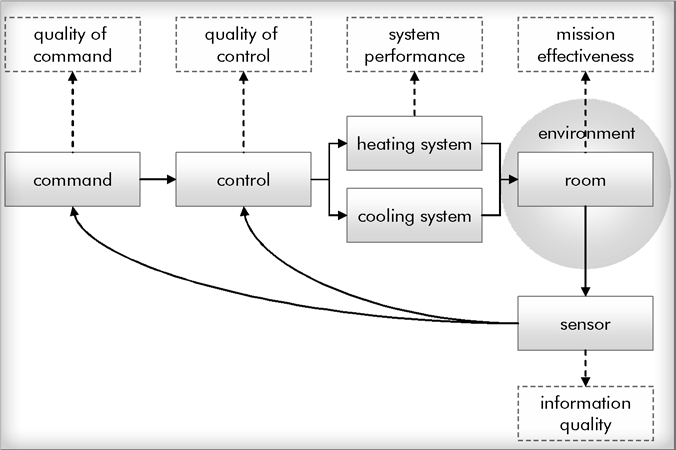The managerial model, Command and Control (C&C) dates back to the dawn of humanity when tribal chieftains dictated the behavior of the group. It survives to this day in many forms. Typically, one thinks of military operations as the current manifestation of C&C in the western world.
According to Wikipedia, by one definition found in The US Department of Defense (DOD) Dictionary of Military and Associated Terms, “command and control functions are performed through an arrangement of personnel, equipment, communications, facilities, and procedures employed by a commander in planning, directing, coordinating, and controlling forces and operations in the accomplishment of the mission.” This definition has evolved from a more simplistic version found in the Cambridge Dictionary, ”situation in which managers tell employees everything that they should do, rather than allowing them to decide some things for themselves.”
One suspects that most laypeople believe the latter definition to be to be the typical approach to C&C in their organizations. In today’s complex (often global) organizational ecosystem, that version is outdated.
The International Command and Control Institute, publication (circa 2005) , Understanding Command and Control develops this management construct in great detail. As the following figure suggests, even a simple C&C structure such as a heating/AC system is driven by a set of KPIs.

This is indicative of the digitalization of the system versus the analog controls many of us can recall from our youth. Adding another layer, today’s ‘Smart’ thermostat operates within a well-defined governance schema such as the Internet of Things.
Strong Bond Governance
We first made the case for “Strong Bond Governance” in our September 17, 2013 Governing Energy blog, Strong vs. Weak? In Critical Infrastructure sectors such as energy, medicine, etc. as defined by the US Department of Homeland Security we make the case for the construct of High Reliability Management (HRM).
The Strong Bond Governance (SBG) paradigm enables HRM. SBG demands Board of Directors and C Suite engagement in operations.
Not directly but by putting in place a governance structure. This has not always been the case with a number of catastrophic man-made disasters as the result.
In some ways, C&C mimics HRM. However, there are some significant differences. HRM sets in place a structure designed to meet the test of adversities.
- Preoccupation with Failure—a recognition that ‘failure is an option’ and the organization must respond quickly and effectively to mitigate exposure and recover. C&C does not directly address is concern.
- Reluctance to Simplify—today’s organizational ecosystems are complex. Reducing operational decisions to the so-called Power Point three bullets, High, Likely, Low is completely unsatisfactory and potentially exposes the firm to business or technical process catastrophe. Likewise, C&C models do not directly address this approach.
- Operational Sensitivity—the field is where organizational action is, and senior management must have a focus on this critical component of the business. C&C also has a focus on operations, especially in the military sector.
- Resiliency—things will go ‘bump in the night.’ Organizations must but in place the processes and expertise to rapidly respond to goblins that will be encountered. C&C does not address this process.
- Deference to Expertise—engage those who have the ‘know how’ to solve problems and that is mostly likely not the management team. This is substantially difference than the C&C model
HRM allows management to look at computer dashboard and get a snapshot of most if not all aspects of the organization. However, this does not mean that these individuals can manage from afar. Those closed to and more knowledge about this issue must take the lead.
Concluding Thoughts
Watching the news, History Channel and/or various movies, one can see that even the military no longer uses simplistic C&C. Small semi-autonomous teams take on the bad guys. To be sure there is a Mission, Rules of Engagement and other governance controls in place.
This provides local commanders the latitude needed to accomplish the mission at a minimum of human (good guy/non-combatants) and other collateral damages. Additionally, military aircraft employ ‘High Reliability Management’ techniques where the expertise of the entire crew is used rather than the Captain dictating operational performance.
Asiana Flight 214 crashed attempting a landing at San Francisco in July 2013. One causal component was deemed to be the C&C culture of the Korean pilots. Cockpit Management might have saved this aircraft and the lives lost.
Likewise, those organizations and their ecosystems in critical infrastructure sectors that use HRM enjoy safer and more productive track records than those that do not—better bottom line. The October 2014 Ebola scare is an example where the public health sector employed HRM and limited the impact of a highly contagious deathly pathogen.
There is a tendency when the stakes are high for management to take the ‘reigns.’ In other words, engage in micromanagement. The usual results are often sub-optimal. The ‘gut instinct’ towards simplistic C&C is a strong urge and this addiction must be put into remission.
A well-established Strong Bond Governance, High Reliability Organization can weather any storm the markets or nature can throw at it. However, this organization transformation must precede the advent of major challenges!
Traditional C&C is not an OE Imperative

